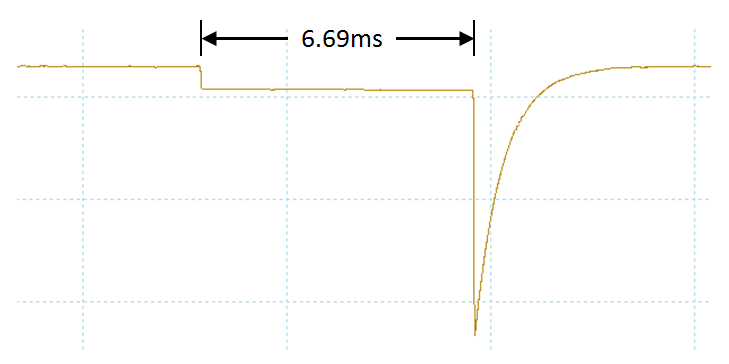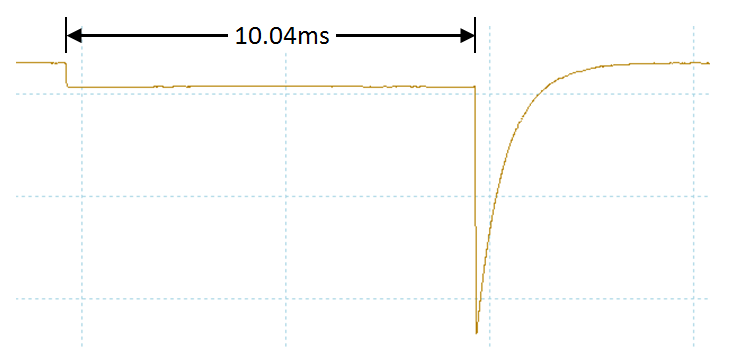Before jumping straight to the answer, it’s necessary to understand the reasons why we are making these changes to the tune. The stoichiometric mass air/fuel ratio for standard gasoline engines is ~14.65:1. This means that if the engine is taking in 14.65kg of air, it will have to inject 1kg of fuel for complete combustion. In contrast, E85 has a value of ~9.76:1. If we assumed the same amount of air was entering the engine (14.65kg), then the engine would now have to inject 1.5kg of fuel for complete combustion. This is a 50% increase in fuel! Now it should be clear why larger injectors are also required.
If only the injector constant was changed in the tune, the DME would still try to keep a 14.65:1 mass ratio of air and fuel. This is where the Target Lambda value comes into play. The global injector opening time is multiplied by this value before any corrections due to coolant temperature, air temperature, cold start, part-throttle, or wide-open-throttle. Therefore, we need to increase this value by 50% to change the behavior of the DME.
To see how this affects the injectors, we will demonstrate this using our hardware-in-the-loop (HIL) setup and a 506 DME from an E36 M3. We have the DME setup on our test bench with various signals being sent to it representing engine speed, crank position, cam position, coolant temperature, air temperature, MAF voltage, and throttle position. This allows us to control the inputs very precisely. We then have a multi-channel oscilloscope measuring the outputs such as injector and spark timing. Using an engine speed of 2000rpm, a MAF voltage of ~1.56V, and various other settings for the remaining inputs, we achieved an injector opening time of 6.69ms for the stock tune as seen in the figure below.

To increase the fuel mass by 50%, we will need to increase the opening time of the injector by 50% meaning a value of 10.04ms. Find the Target Lambda constant in the Fuel Control group. To increase this value by 50%, we will need to change it from the default value of 128 to 192. However, the effect on the injector opening time is not quite perfectly linear. We actually had to change it to 201 to get exactly 10.04ms as shown in the oscilloscope trace below.


Because our shop car still runs on gasoline, we have no way of taking this exercise to the next step which would be fine tuning to achieve a perfect stoichiometric air/fuel ratio. Regardless, the next step would be to validate the change using a wideband oxygen sensor. Preferably, changing the Target Lambda value would be done before the injectors were changed OR after the tune has been perfected for larger injectors. Do not attempt to tune both Target Lambda and the Injector Constant at the same time! It will be nearly impossible to figure out which one should be changed without keeping one fixed. Otherwise, you will be constantly chasing these values especially when you start tuning the base fuel maps and the fuel correction maps.
If you change the Target Lambda BEFORE swapping to larger injectors, keep the engine load very low while tuning to ensure that the injectors do not exceed their maximum duty cycle (80-85%). The goal is to fine tune the Target Lambda value until your wideband gauge reads an air/fuel ratio of 9.76:1. If your gauge has the ability to display in “lambda” it will be even easier since the target for stoichiometric combustion is always 1.0 regardless of the fuel type!
If you change the Target Lambda AFTER swapping to larger injectors, make sure that your tune has been perfected for the larger injectors first. Otherwise, you’ll chase many different parameters trying to achieve a proper tune. The procedure is still the same: keep the engine in low-load areas while trying to achieve stoichiometric combustion.
After you’ve found the Target Lambda value that gives stoichiometric combustion for much of the part-throttle areas, you can then tune for higher load and wide-open-throttle. However, the Target Lambda value should not be touched at this stage. All further changes should be made to the base fuel maps or the fuel correction maps.
Warning: As with any engine tuning to account for drastic hardware changes such as these, this should only be done on a load-bearing dyno with an accurate wideband oxygen sensor! Do not attempt to blindly apply these exact values assuming it will give you the perfect tune. Every setup is slightly different and will require slightly different values. We have only validated this change based on injector opening time and the assumption that fuel mass is perfectly correlated to injector opening time. Using this approach will get you close on the first attempt, but not perfect. Fine tuning will be up to you!